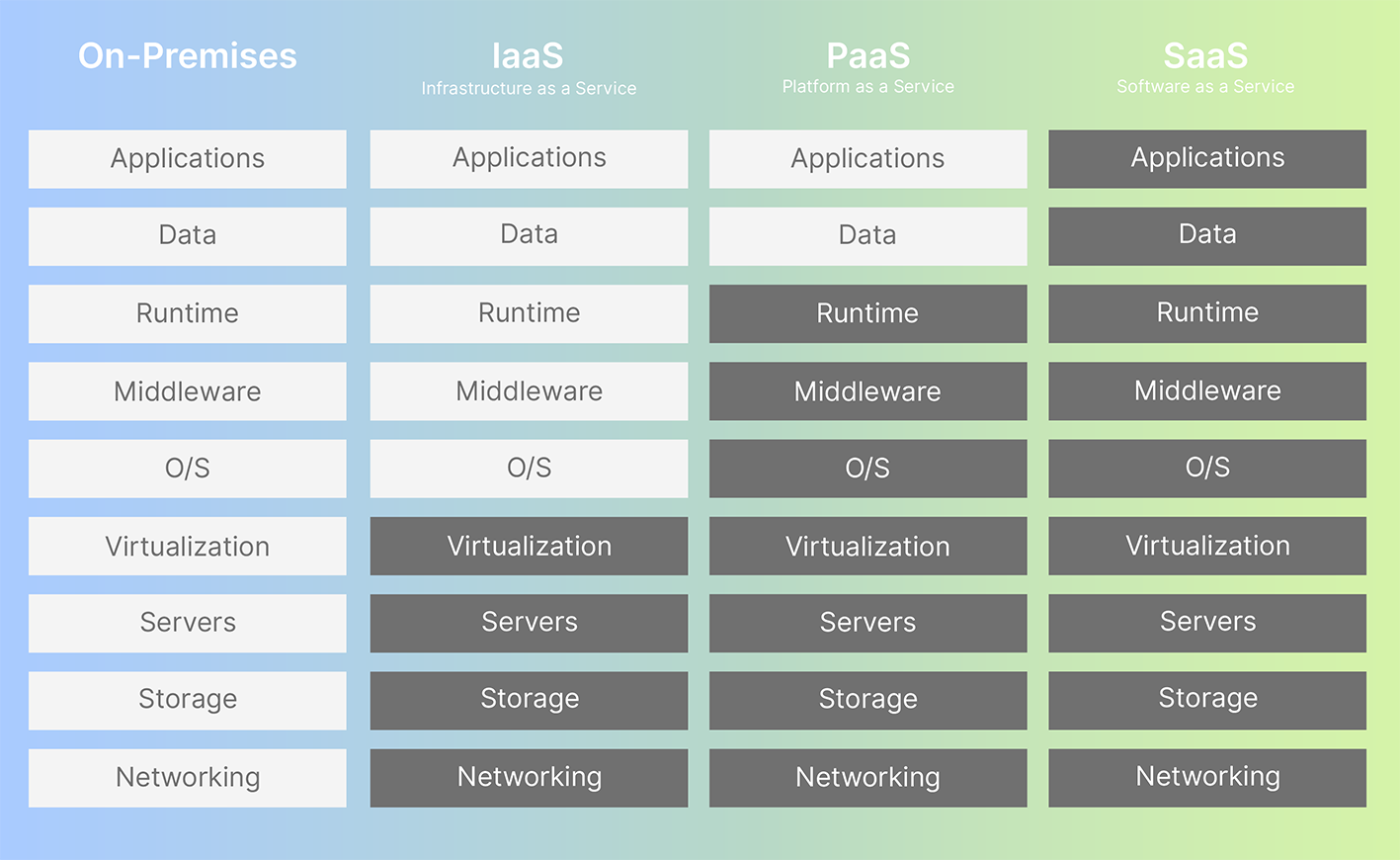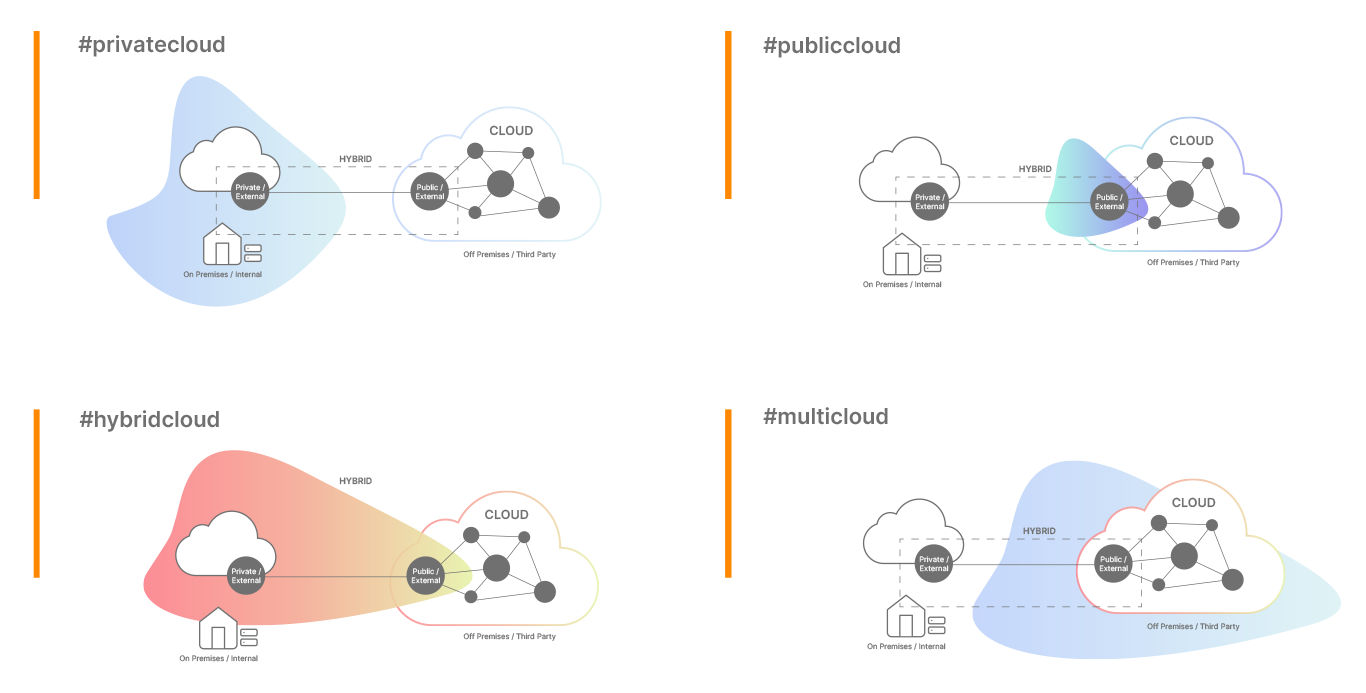
Cloud management: background and references

Theoretical background and practical reference of cloud computing
Cloud computing refers to the provision of computing power, storage space, applications and other IT-specific resources via the Internet with a “pay as you go” billing model. This definition can be broken down even further - cloud computing is a delivery model based on virtualization.
Furthermore, this delivery model includes resources in the form of infrastructure but also applications as services that can be accessed via the Internet and can be provided by several providers. The big advantage is the flexible computing or storage capacity that is adapted to the demand and consumption at any time. The service models of cloud operators can be divided into three different types.
Concepts of cloud computing
The first concept is Infrastructure as a Service. This concept provides the customer with virtualized computing power, storage, networks and other hardware resources. The client can use these services for any possible application, yet it should be noted that the user has no control over the infrastructure, but can freely configure the operating system, network components and other resources.
The second concept is Platform as a Service. The user is provided with self-developed or purchasable applications on a cloud-based environment. It must be ensured that the client has no control over the infrastructure, but can install, manage, and operate applications. Furthermore, the client can usually configure the cloud environment himself.
The third concept is Software as a Service. In this concept, the customer gets access to software applications that run on a cloud environment. The operation of the application and the infrastructure is entirely up to the provider. The user has no control over the infrastructure and can only make user-based configurations in the software.
Overview of the basic cloud service models

A further differentiating criterion in relation to cloud computing is the different types of cloud - private, public and hybrid cloud. The private cloud is a private cloud infrastructure that has only one user, e.g. a company. This infrastructure can be owned, managed and operated by an organization and/or a third-party provider. The public cloud in turn is available for public use and can be owned, managed, and operated by a company or other organizations. There are also two other types of cloud infrastructure based on the previous two types - the hybrid cloud and the multicloud. The hybrid cloud is a dedicated network of a private and public cloud. The multicloud approach offers companies optimal conditions to meet the increasing requirements for dynamic, modern and flexible IT.
A future-oriented multicloud strategy combines on-premises operations with services and applications running on multiple cloud providers, enabling companies to take advantage of each platform’s benefits while mitigating their downsides. Many companies already use or increasingly adopt hybrid or multicloud models and consume such services as offered from the various cloud providers, as best suited for the business. However, if companies want to keep an overview of their distributed cloud environments, they are often challenged by setting up a management solution themselves or finding a reliable and easy-to-use multicloud management tool.
Difference
The main differences between hybrid and multicloud are that a hybrid cloud always consists of a private and public cloud – unlike multicloud, which consists of several public clouds, but the model can also include physical and virtual infrastructure, e.g. private clouds. On the other hand, in a multicloud model, different clouds perform different tasks, with the components of the hybrid cloud usually working together. This means that in a hybrid environment, data and processes can mix and overlap.
Schematic structure of cloud computing types

In order to provide a holistic understanding of cloud computing it is necessary to define two architecture-relevant terms - virtualization and containerization. Virtualization allows a hardware to be represented to the user as several (virtual) machines. The virtualization system ensures that the hardware is distributed to the various guest systems. On each guest system a complete operating system is installed for the user. In the context of this operating system the user can run his applications. Containerization also allows to have several independent contexts on a machine, in which applications can run. In contrast to virtualization, this approach is more lightweight, because not a complete operating system is provided for every context. Instead, the existing operating system is configured differently using clever file system layers.
As described above, there are different types of clouds. To connect and control these cloud types a Cloud Management Platform (CMP) can be used. A CMP is used to monitor and control the company resources. Depending on the software tools integrated in the CMP, the platform can be used for private clouds, public clouds and hybrid clouds.
The functions of cloud management platforms are highly dependent on the cloud concept, the provider and the requirements placed on the CMP platform. It is mostly about the provision of cloud services, as well as monitoring and control tasks. Among the most important functions are services with analysis and reporting functions that give users an overview of the use of the cloud service. A further function of CMP management concerns the administration of resources, resource management. This relates to the management of virtual machines, storage and networks. Another field of application is service management, which supports users in capacity planning of cloud services. This ensures the availability and performance of the services. It is all about resource discovery, tagging, provisioning, and aggregation of cloud services. In addition, there are further general and industry-specific functions and applications.
Cloud computing in the area of media and broadcast
Developments in technology and current consumer behavior are changing the way video content is created, edited, monetized and delivered to consumers. This transformation or shift affects the entire media value chain. The shift includes changes in traditional broadcasting models and platforms towards digital distribution of content via the Internet to an ever-increasing number of end devices. As a result, broadcasters must deal with three major upheavals, including the scalability, cost flexibility and agility of cloud computing.
Changing consumer behavior is based on the fact, that consumers demand more and more choices in the way they consume video content. This includes on-demand offerings or interactive possibilities.
Over-the-top (OTT) offerings and streaming media services have become an integral part of media consumption behavior, with more tailored and interactive viewing experiences in particularly great demand. As a result, consumers want more choice, convenience and control. These changes bring new requirements for traditional broadcasters, including issues such as the provision of processing power and resources. This places massive demands on traditional physical hardware infrastructures, resulting in a growing demand for flexible XaaS applications and computing power for content processing and distribution. It also increases the demand for more flexible business models and systems to efficiently address the fragmented and demanding audience.





